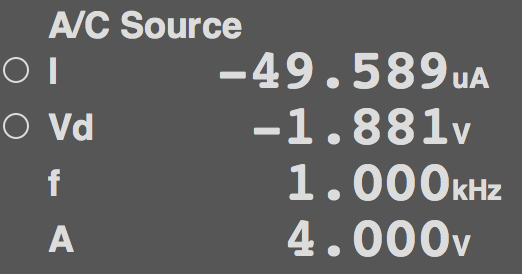Question:
With source voltage kept constant at 8V peak to peak vary the frequency until the phase angle "theta" Vr referenced to Vs is approximately 45degrees. Record the Vpp value across R1 and the frequency at which "theta" is equal to 45degrees.
Situation:
For clarity I will call R1 the resistance in ohms and Theta Vr the phase angle.
I can approach this two ways from what I know. I could use my simulator and increase the frequency step by step. At each time I would have to figure the reactance and perform the following calculation to determine theta. This process would be very long to get an approximate answer for the frequency.
Theta Vr = ARCTAN(Xc/R1)
Xc = Reactance of the capacitor "ohms"
R1 = Resistance "ohms"
Theta Vr = "Theta" Phase angle of Vr referenced to the Source Voltage (VS)
NOTE: With the source set to 8Vpp and frequency set to 1kHz Theta Vr = 78.27489 degrees. With the source set to 8Vpp and frequency set to 1kHz Theta Vc = 11.72511 degrees.
The other way I thought would be to derive a formula that resembles a optimization problem. Derivatives will solve for which the slope is zero. So it would seem I could approach this the same way when solving for the frequency.
Finally, lets say we want to change R1's value and repeat this procedure. It would seem that there has to be a generic expression where X is in ohms and Y is in frequency so this calculation is much less tedious.
Any ideas?
Here is a screenshot of the circuit for clarification.

Here are the parameters of which I set my AC source to.

